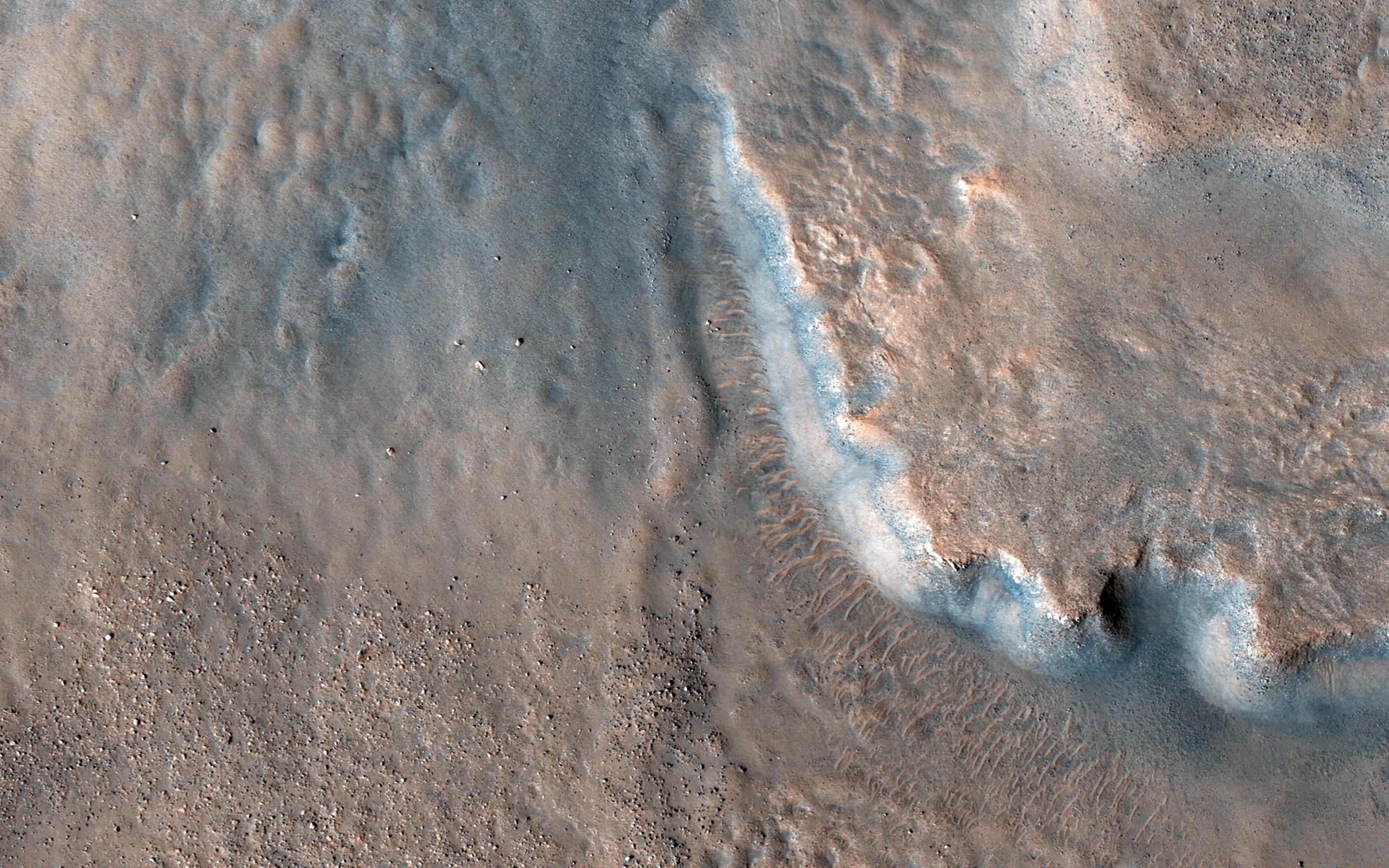
|
Fans and Valleys
- Click the image above for a larger view
- Full-Res JPEG (2880 x 1800) (949.7 kB)
- Full-Res TIFF (2880 x 1800) (15.6 MB)
Caption:

Map Projected Browse Image
Click on image for larger version
This image acquired by NASA's Mars Reconnaissance Orbiter on April 29, 2018, shows an impact crater approximately 23 kilometers across is home to fan-shaped deposits that extend from the rim and sit on the interior crater floor.
Thick beds with varying tone are exposed along the edge of the fan . Shallow valleys that carve into the smooth upland surfaces outside of the crater may provide clues regarding the formation of the deposits. Many boulder-sized blocks sit on the interior crater floor beyond the toe (distal edge) of the deposits.
This fan-hosting crater is located near the boundary between Tempe Terra and Acidalia Planitia in the Northern Hemisphere of Mars.
The map is projected here at a scale of 50 centimeters (19.7 inches) per pixel. [The original image scale is 60.4 centimeters (23.8 inches) per pixel (with 2 x 2 binning); objects on the order of 181 centimeters (63.4 inches) across are resolved.] North is up.
Background Info:
The University of Arizona, Tucson, operates HiRISE, which was built by Ball Aerospace & Technologies Corp., Boulder, Colorado. NASA's Jet Propulsion Laboratory, a division of Caltech in Pasadena, California, manages the Mars Reconnaissance Orbiter Project for NASA's Science Mission Directorate, Washington.
Cataloging Keywords:
| Name | Value | Additional Values |
|---|---|---|
| Target | Mars | |
| System | ||
| Target Type | Planet | |
| Mission | Mars Reconnaissance Orbiter (MRO) | |
| Instrument Host | Mars Reconnaissance Orbiter | |
| Host Type | Orbiter | |
| Instrument | High Resolution Imaging Science Experiment (HiRISE) | |
| Detector | ||
| Extra Keywords | Color, Crater, Impact, Map | |
| Acquisition Date | ||
| Release Date | 2018-07-24 | |
| Date in Caption | 2018-04-29 | |
| Image Credit | NASA/JPL-Caltech/Univ. of Arizona | |
| Source | photojournal.jpl.nasa.gov/catalog/PIA22592 | |
| Identifier | PIA22592 | |
